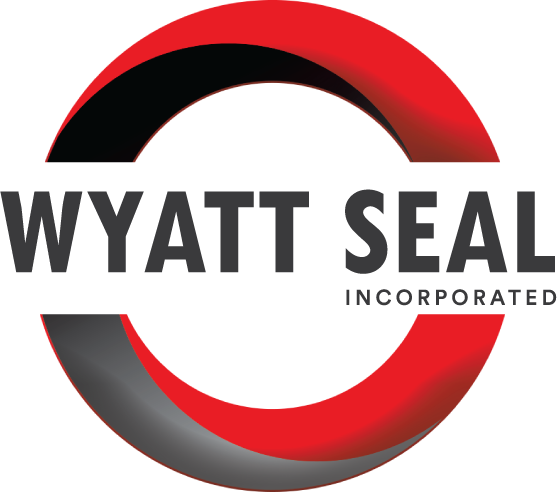Need some assistance?
- Overview
-
By Type
Custom - Standard (AS568)
-
By Brand
Parker - Freudenberg
-
By Material
Nitrile - FKM
- EPDM
- FFKM
- Silicone
- Fluorosilicone
- PTFE
- Polyurethane
- Teflon Encapsulated
- HNBR
- Overview
-
By Type
U-Cups - Wipers
- Wear Rings
Need some assistance?
Need some assistance?
-
O-RINGS
- Overview
-
By Type
Custom - Standard (AS568)
-
By Brand
Parker - Freudenberg
-
By Material
Nitrile - FKM
- EPDM
- FFKM
- Silicone
- Fluorosilicone
- PTFE
- Polyurethane
- Teflon Encapsulated
- HNBR
-
HYDRAULICS & PNEUMATICS
- Overview
-
By Type
U-Cups - Wipers
- Wear Rings
- ROTARY SEALS
- CUSTOM MOLDED
- GASKETS
- MACHINED RUBBER & PLASTICS
- EXTRUDED SHAPES & PROFILES
- SPECIALTY PRODUCTS
Parker O-Rings
If your business has ever needed a durable and reliable sealing method, it is likely that you turned to O-rings. O-rings are the most commonly used seals in the world since they are an affordable and reliable sealing option. An O-ring’s reliability depends on customers choosing the correct material and installation method for their projects.
Customers must choose the right product to enjoy the benefits that the O-ring has to offer, and this starts with Parker Hannifin. Parker Hannifin’s Engineered Materials Group has been a leading provider of reliable O-ring options for decades, and they have supported a range of industries. Parker partners with distributors like Wyatt Seal to provide the ultimate sealing solutions.
What are Parker O-Rings?
O-rings come in various materials and sizes, and customers should carefully consider the demands of the environment to ensure long-lasting performance. With a vast range of materials and designs, Parker O-rings ensure that customers do not have to settle for O-rings that only partially meet their needs.
Seals provided by Parker EMG are superior because Parker is committed to providing its customers with optimal support. Parker offers an innovative Parker O-Ring Selector tool, which matches customers with O-ring options based on their size and material specifications.
Types of Parker O-Rings
Choosing the correct material is pivotal to maximizing the O-ring’s effectiveness. Parker offers an extensive inventory of seals and O-rings to address every project’s needs. The different types of Parker O-rings include:
Fluorocarbon O-Rings
Fluorocarbon has excellent resistance to high temperatures, ozone, oxygen, mineral oil, synthetic hydraulic fluids, fuels, aromatics, and many organic solvents and chemicals. Special FKM compounds exhibit improved resistance to acids and fuels.
Hifluor™ O-Rings
Parker's Hifluor® has high purity with extremely low particle generation and ion content. Translucent in color, the material is free of inorganic and black filler systems. The chemical and plasma etch resistance make it an excellent material for semiconductor applications.
Aflas® O-Rings
Parker's Aflas® has chemical resistance and is excellent across a wide range of aggressive media.
Parofluor O-Rings
Parker’s Parofluor combines the elastic properties of elastomer compounds with the chemical and thermal resistance of PTFE. It offers excellent permanent elasticity compared to other perfluorinated elastomers.
Silicone O-Rings
Silicones (VMQ) have good ozone and weather resistance as well as good insulating and physiologically neutral properties as a whole. Silicone is ideal for the life science and consumer product markets.
Fluorosilicone O-Rings
Parker's fluorosilicone (FVMQ) contains trifluoropropyl groups next to the methyl groups. The mechanical and physical properties are very similar to VMQ. However, FVMQ offers improved fuel and mineral oil resistance but poor hot air resistance compared to VMQ.
Nitrile O-Rings
Parker's Nitrile rubber (NBR) is the general term for acrylonitrile butadiene copolymer. The acrylonitrile content of nitrile sealing compounds varies considerably (18% to 50%) and influences the physical properties of the finished material. The higher the acrylonitrile content, the better the resistance to oil and fuel. NBR has good mechanical properties when compared with other elastomers and high wear resistance, but is not resistant to weathering and ozone.
EPDM O-Rings
Parker's EPR copolymer ethylene propylene and ethylene-propylenediene rubber (EPDM) terpolymer are particularly useful when sealing phosphate-ester hydraulic fluids and in brake systems that use fluids having a glycol base.
Polychloroprene Neoprene® O-Rings
Parker's Polychloroprene was the first synthetic rubber developed commercially and generally exhibits good ozone, aging, and chemical resistance. It has good mechanical properties over a wide temperature range.
Polyacrylate O-Rings
Parker's polyacrylate ACM (acrylic rubber) has good resistance to mineral oil, oxygen, and ozone. Water compatibility and cold flexibility of ACM are significantly worse than with nitrile.
Ethylene Acrylate Vamac® O-Rings
Parker's EPR copolymer ethylene propylene and ethylene-propylenediene rubber (EPDM) are particularly useful when sealing hydraulic fluids and in brake systems that use fluids with a glycol base.
Butyl O-Rings
Butyl rubber (isobutylene-isoprene rubber or IIR) has a very low permeability rate and good electrical properties but poor short-term rebound.
Epichlorohydrin O-Rings
Epichlorohydrin rubbers offer low-temperature flexibilities, resistance to oils, fuel, and common solvents, and higher temperature resistance than NBR. It offers good weather ability and dynamic properties.
Why Wyatt Seal
At Wyatt Seal, we proudly supply our customers with trustworthy, dependable options as a Parker Hannifin Engineered Materials Group distributor. We make it easy for you to benefit from reliable seals and O-rings by providing our customers with Parker's industry-leading sealing technologies.
Our combination of Wyatt Seal experts and Parker O-rings ensure that our customers are equipped with the best sealing solutions. If you are ready to learn more about Parker O-rings, you can check out our product page or reach out to us to talk!

